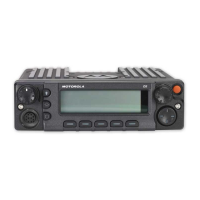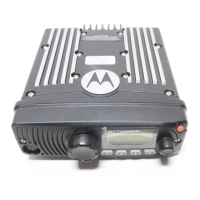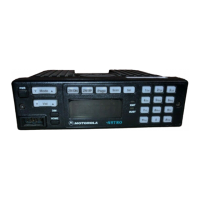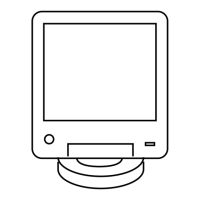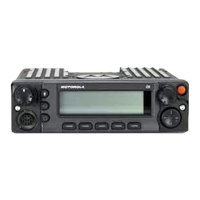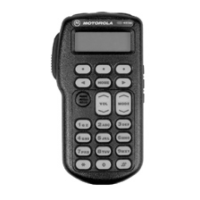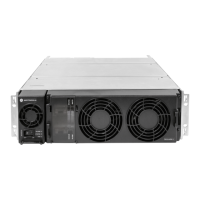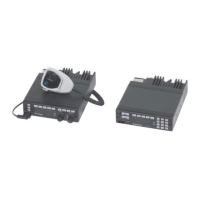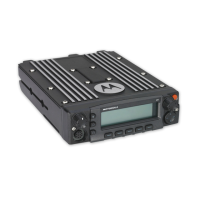2-3
algorithm the DSP uses to encode the information. This algorithm will
result in deviation levels that are limited to four discrete levels.
Transceiver Board
Overview
The receiver front end consists of a preselector, an RF amplifier, a
second preselector, and a mixer. In the VHF and UHF radios, both
preselectors are varactor-tuned, two-pole filters controlled by the
microcontrol unit (MCU) through the digital/analog (D/A) IC. On the
800MHz receiver front end, these filters are fixed-tuned. The RF
amplifier is a dual-gate, gallium- arsenide based IC. The mixer is a
double-balanced, active mixer coupled by transformers. Injection is
provided by the VCO through an injection filter. See Table 14 for local
oscillator (LO) and first IF information.
The frequency generation function is performed by three ICs and
associated circuitry. The reference oscillator provides a frequency
standard to the synthesizer/prescaler IC, which controls the VCO IC.
The VCO IC actually generates the first LO and transmit-injection
signals and buffers them to the required power level. The synthesizer/
prescaler circuit module incorporates frequency-division and
comparison circuitry to keep the VCO signals stable. The synthesizer/
prescaler IC is controlled by the microcontrol unit through a serial bus.
Most of the synthesizer circuitry is enclosed in rigid metal cans on the
transceiver board to reduce microphonic effects.
The receiver back end consists of a two-pole crystal filter, an IF
amplifier, a second two-pole crystal filter, and the digital back-end IC
(ABACUS). The two-pole filters are wide enough to accommodate
5kHz modulation. Final IF filtering is done digitally in the ADSIC.
The digital back-end IC (ABACUS) consists of an amplifier, the second
mixer, an IF analog-to-digital converter, a baseband down-converter,
and a 2.4MHz synthesis circuit to provide a clock to the ADSIC on the
vocoder board. The second LO is generated by discrete components
external to the IC. The output of the ABACUS IC is a digital bit stream
that is current driven on a differential pair for a reduction in noise
generation.
The transmitter consists of an RF PA IC that gets an injection signal
from the VCO. Transmit power is controlled by two custom ICs that
monitor the output of a directional coupler and adjust PA control
voltages correspondingly. The signal passes through a RX/TX switch
that uses PIN diodes to automatically provide an appropriate interface
to transmit or receive signals. Antenna selection is done mechanically
in the control top.
Controller Board
Overview
The controller board (see Figure 2-1.) contains the radio’s microcontrol
unit with its memory and support circuits, voltage regulators, audio,
and power control circuits. Connected to the controller board are the
display module, keypad module, transceiver board, vocoder board,
secure module, and front cover housing assembly.
The microcontrol unit (MCU) controls receive/transmit frequencies,
power levels, display, and other radio functions, using either direct
logic control or serial communications paths to the devices.The
